- Latest Archaeology Updates
- Importance and applicability
- Famous Archaeologists
- Museums Collections
- Site Map
- World Heritage Sites
- World History Monuments
- Archaeological Organizations
- World Atlas of Archaeology
- Forensic Investigation and Geophysics
- Contact Us
- Movies based on Archaeology
- Frequently Asked Questions
- Archaeological discoveries
- Tell a Friend
- Archaeological Abbreviations
- Gallery Collections
- Famous-Museums site map
- Famous-archaeologists site map
- Archaeological Monuments site map
Protohistoric archaeology is a subfield of archaeology that focuses on the transition period between prehistory and history. This period is referred to as the protohistoric, and its study is essential to understanding the
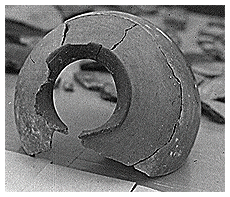 development of civilization and the rise of complex societies. Protohistoric archaeology is a complicated field, as it deals with the emergence of written language and other kinds of records that can provide a different kind of evidence than can be found in prehistoric contexts.
Protohistoric archaeology is interdisciplinary, and it draws on the methods and theories of anthropology, history, and linguistics. It examines the material remains of a culture, including artifacts, ecofacts, and features, to reconstruct the lives of people in the past.
development of civilization and the rise of complex societies. Protohistoric archaeology is a complicated field, as it deals with the emergence of written language and other kinds of records that can provide a different kind of evidence than can be found in prehistoric contexts.
Protohistoric archaeology is interdisciplinary, and it draws on the methods and theories of anthropology, history, and linguistics. It examines the material remains of a culture, including artifacts, ecofacts, and features, to reconstruct the lives of people in the past.This type of archaeology relies heavily on written documents and oral histories, as well as archaeological data, to provide a comprehensive understanding of the past. Protohistoric archaeology is used to understand the emergence of state-level societies, which is a process that is often difficult to track through the archaeological record. In thecase of the American Southwest, the transition from small-scale hunter-gatherers to large-scale agricultural societies occurred around 1000 CE. Protohistoric archaeology has been used to uncover the changes in material culture, subsistence practices, and social organization that took place during this period. The study of protohistoric archaeology is not only limited to the American Southwest.
It can be applied to a variety of cultures and regions, including the Ancient Near East and Mesoamerica. This type of archaeology has revealed a great deal about the development of writing, the formation of states, and the rise of complex societies. In summary, protohistoric archaeology is a subfield of archaeology that focuses on the transition period between prehistory and history. It uses a variety of methods, including written documents and archaeological data, to reconstruct the lives of people in the past. This type of archaeology has been used to uncover the changes in material culture, subsistence practices, and social organization that took place during the emergence of state-level societies.
Travertine Hot Springs Area
Protohistoric Archaeology at the Travertine Hot Springs
Protohistoric archaeology is the study of the transition period between prehistory and history, when writing systems were first developed and used. It is a branch of archaeology that focuses on the material remains of the period. Protohistoric archaeology is often characterized by the emergence of new technologies, the development of complex socio-political structures, and the spread of trade networks.
The protohistoric period is typically defined as the period between 1000 BC and 500 AD, though there is some variation in the exact dates depending on the region. During this period, the use of writing systems became
in many parts of the world. This was a major development, as it allowed for the recording and transmission of information, leading to the development of complex societies and cultures.
The protohistoric period is important for understanding the development of human societies. Archaeologists use evidence from archaeological sites to understand how cultures changed and interacted with each other during this period. This includes examining the artifacts, architecture, and burial sites of past cultures to learn about their beliefs, practices, and social structures.
Archaeologists also use evidence from written sources, such as historical documents, to learn about the protohistoric period. Written sources can provide information about the political and economic institutions of the time, as well as the beliefs and values of the people. This evidence can be used to understand how cultures interacted and changed during the protohistoric period.
In addition to written sources, archaeologists use evidence from art and architecture to understand the protohistoric period. Art and architecture can provide insight into the beliefs and values of a culture, as well as the social and political structures in place. This evidence can be used to understand how cultures interacted and changed during the protohistoric period.
Protohistoric archaeology is an important field of study, as it helps us to better understand the development of human societies and cultures. By examining the archaeological, written, and artistic evidence from the protohistoric period, archaeologists can gain insight into how cultures interacted and changed, as well as the development of complex societies and cultures.

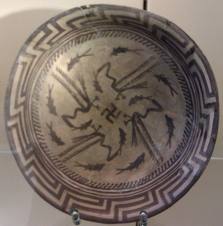
The use of traditional subsistence patterns by protohistoric cultures can be seen in a variety of archaeological remains, including artifacts, features, and settlement patterns. In many cases, these patterns have been preserved through the use of archaeological methodology, which allows researchers to examine ancient subsistence behaviors in detail. Hunting and gathering, for example, can be seen in the remains of stone tools and animal bones, while agricultural practices can be observed through the presence of domesticated plants and animal remains. In some cases, protohistoric cultures may have also utilized maritime resources, as evidenced by the presence of shell middens and other evidence of marine exploitation. By examining the evidence of traditional subsistence patterns, archaeologists can gain valuable insight into the lifeways of ancient cultures.
Rich Resources over the web on Protohistoric Archaeology
Protohistoric Archaeology in wikipedia:
Proto-historic archaeology is a field of study that focuses on the archaeological evidence of the period before written records began. It is the study of cultures that existed before the invention of writing and the beginning of recorded history. Proto-historic archaeology covers a vast period of time, from the emergence of archaic humans to the beginnings of the Iron Age. It is a multidisciplinary field that draws on many sources of data, including artifacts, architecture, and ecology. Proto-historic archaeology is used to learn about the transition from hunter-gatherer cultures to early agricultural societies, the development of metalworking and other technologies, and the interactions between different cultures. It is also used to study the evolution of language, religion, and social systems. Proto-historic archaeology is an important part of understanding the human past and the development of civilizations.
-
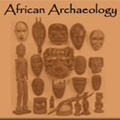
African Archaeology is the study of the history and prehistory of the African continent, as well as its societies and cultures, through the use of archaeological evidence. African Archaeology covers a broad range of topics, from the Stone Age to the present day. -
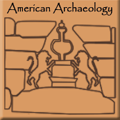
American Archaeology also known as New World archaeology, is the study of the archaeological history and prehistory of the Americas. It is a subfield of archaeology, the study of the human past, which seeks to understand societies and cultures by examining their material culture, such as artifacts and ruins. -
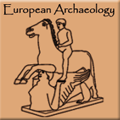 European Archaeology is the scientific study of the material remains of past cultures and societies in Europe, from the Paleolithic period to the present day. It is an interdisciplinary field which draws on the methods and theories of a range of disciplines, including history, anthropology, art history, geography, geology and linguistics.
European Archaeology is the scientific study of the material remains of past cultures and societies in Europe, from the Paleolithic period to the present day. It is an interdisciplinary field which draws on the methods and theories of a range of disciplines, including history, anthropology, art history, geography, geology and linguistics. -
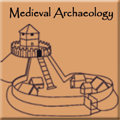
Medival archaeology is a field of archaeology that is primarily concerned with the material remains of the Middle Ages, which is roughly defined as the period from the 5th to the 15th century. -
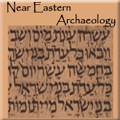
Near Eastern Archaeology is the study of the material culture found in the Near East, a region of Eurasia that covers the Middle East, North Africa, and parts of Central Asia. The region is often referred to as the cradle of civilization, as it is the site of some of the earliest known civilizations, including the Sumerian, Babylonian, and Assyrian empires. -
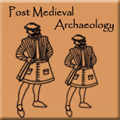
Post Medieval Archaeology is the study of the period from the 15th century to the 19th century. It is a period of great change and transformation, with the rise of nation states, the onset of industrialization and the spread of global trade. Archaeological evidence from this period reflects the development of these changes and the impact they had on everyday life. -

Modern Archaeology is the study of human activity in the past using the material remains of a culture. It is a subfield of anthropology that includes the study of artifacts, architecture, landscapes, and cultural landscapes. It is a scientific approach to the study of past cultures and societies, and often involves excavation, laboratory analysis, and other research method
